Key in a search term below to search our website.
Key in a search term below to search our website.
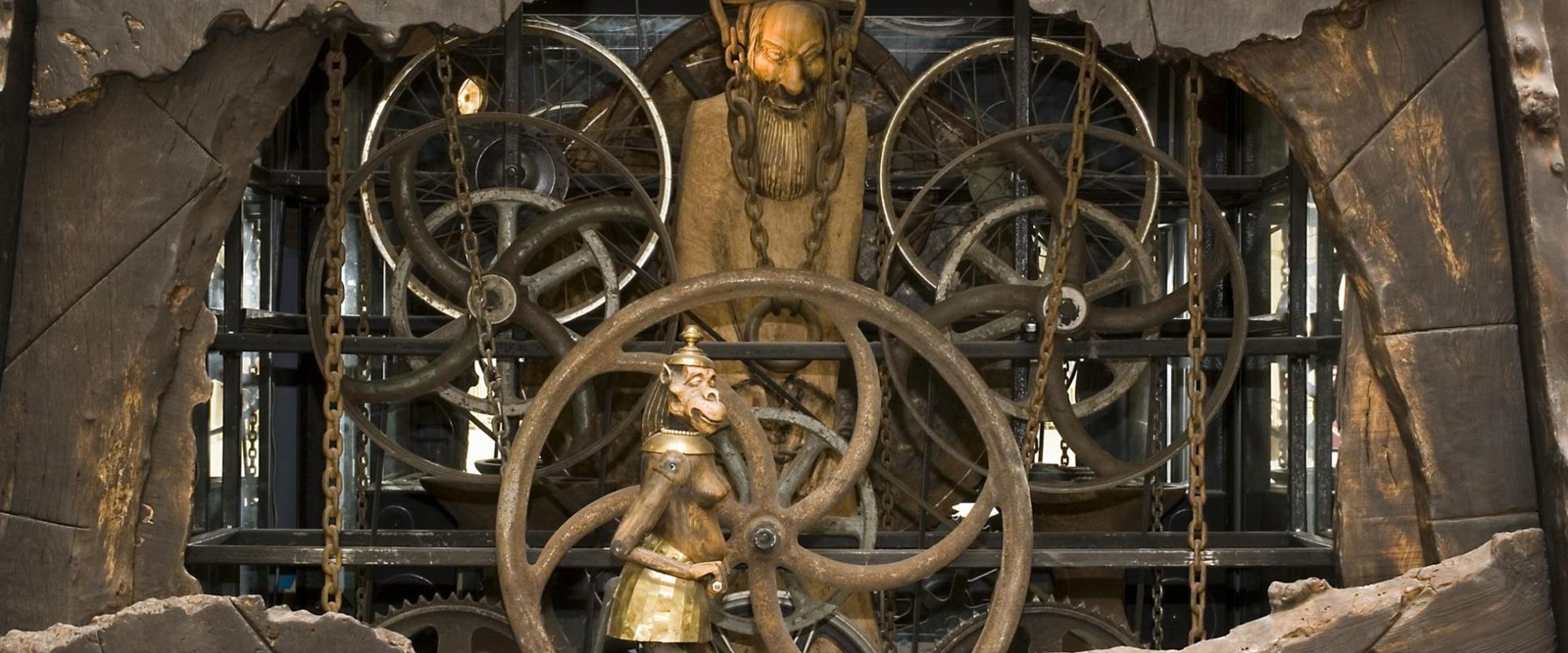
The millennium clock tower echoes the form of a medieval cathedral, standing just over ten metres high. It marks the passing of time but is also a summary of the best and worst of the twentieth century. The intricately animated construction comprises four sections: The Crypt, The Nave, The Belfry and The Spire. Each has its own stories to tell and secrets to reveal.
Date
1999
Made in
Scotland
Made by
Millennium Clock Makers Trust. Five master makers contributed their skills to making the clock: Tim Stead (furniture maker), Eduard Besudsky (kinetic sculpture) Annica Sandström (glass artist), Jürgen Tübbecke (clockmaker) and Maggy Lenert (illustrator).
Made from
Wood, glass and metal
Museum reference
On display
Grand Gallery, Level 1, National Museum of Scotland
Did you know?
The music played by the clock is the 3rd Movement of Concerto in A minor, Allegro BWV 593, by Johann Sebastian Bach.
The Crypt at the base of the tower houses a bewildering combination of wheels and chains. Two figures are at the heart of this section: an oak figure of an Ancient Spirit and the colourful, mischievous Egyptian Monkey, now a favourite with children.
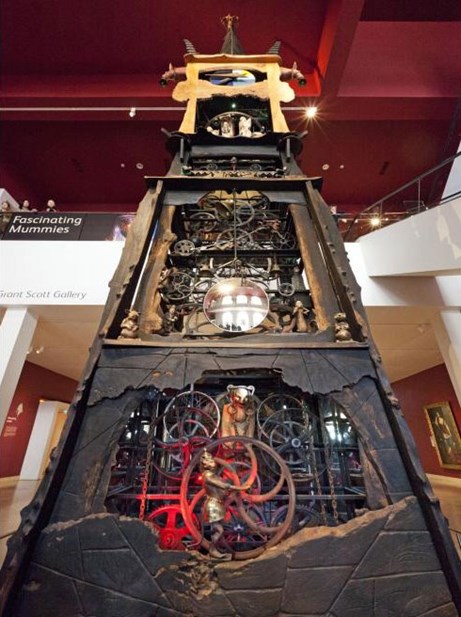
Above: The Egyptian monkey appears to turn the mechanism of the clock.
The Nave holds a pendulum with a skeletal death figure straddling a convex mirror. Distorted figures of Lenin, Hitler and Stalin act as a reminder of the worst aspects of the twentieth century. But there is celebration of better times, too, with a playground of animated characters, including a Chaplin-like figure.
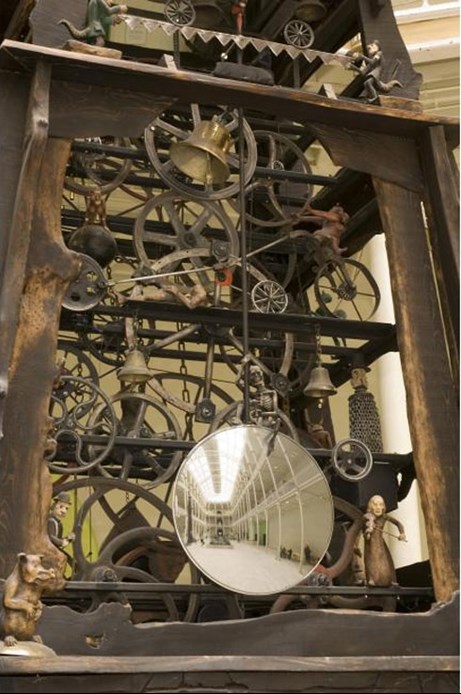
Above: The figure of Charlie Chaplin peeks out from the left of the clock.
Higher still is The Belfry, which accommodates the clock and the Requiem, a circle of twelve figures. Each represents a calendar month, as well as a hardship or tragedy that has afflicted humanity, from war to famine, slavery to persecution. The clock face is the most contemporary part of the tower with its brightly-coloured glass panels. The precision of the clock counteracts the chaos seen elsewhere in the tower.
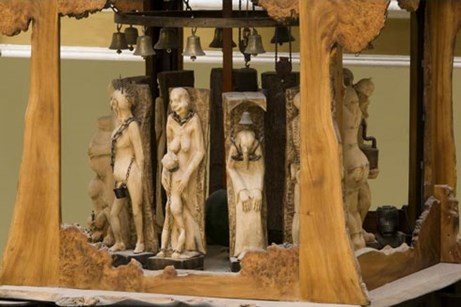
Above: The Requiem.
Right at the top of the clock tower is The Spire, empty apart from its bell. A figure stands at the very top, a female figure carrying a dead man. This is the Pietà, from the Italian for compassion and pity. It acts as a symbol for what has gone before and the strength we need to move forward.
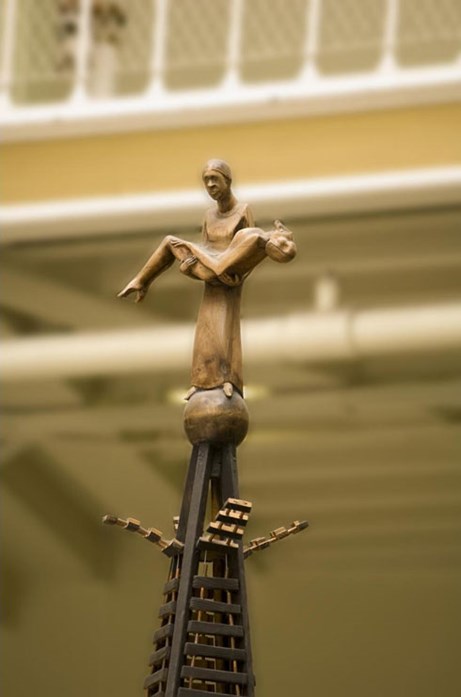
Above: The Pietà at the top of the Spire.
Rose Watban, Senior Curator of Applied Art and Design, understands that the clock is a provocative piece:
“We’ve had people who object to it, saying it’s not the sort of thing to show, that it’s too depressing. I don’t feel it’s harking back to awful things in the past, but rather acknowledging them and looking forward to a brighter future.
“Others love it, with crowds gathering to see it in motion. The moment the wonderful music starts playing, people are drawn across to the clock and most are delighted by it.